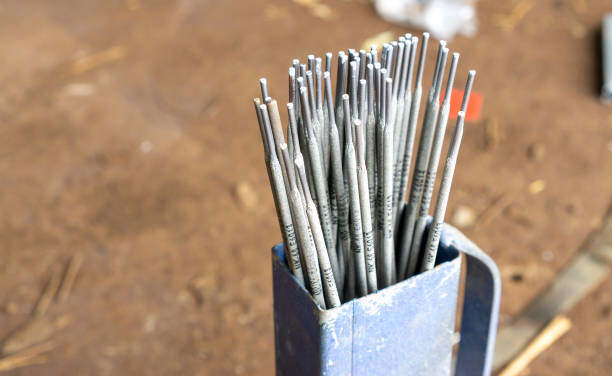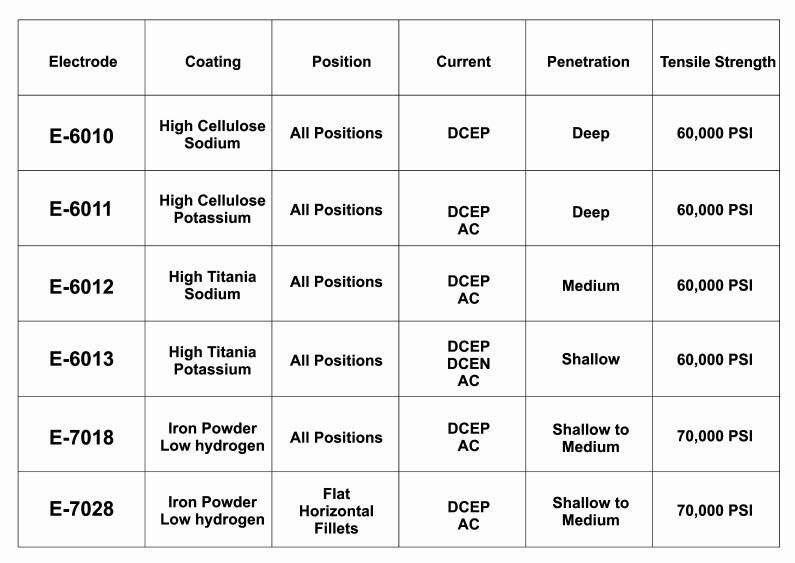Tungsten electrodes are essential components in TIG welding, as they create the electric arc that melts the base metal and the filler rod. However, tungsten electrodes are not immune to problems that can affect the quality and efficiency of the welding process. In this article, we will discuss how to identify and solve some of the most common tungsten electrode and arc issues.

I. What are Tungsten Electrodes?
Tungsten electrodes are made of tungsten, a metal that has the highest melting point of any metal (3,410 degrees Celsius or 6,170 degrees Fahrenheit). This makes tungsten electrodes durable and stable in high-temperature welding applications. Tungsten electrodes come in different sizes, shapes, and compositions, depending on the type and thickness of the material being welded, the welding current, and the desired arc characteristics.

II. How to Identify Tungsten Electrode Problems?
One of the first signs of tungsten electrode problems is the appearance of the electrode tip. A clean and sharp electrode tip is ideal for producing a stable and focused arc. However, if the electrode tip is contaminated, melted, or blunt, it can cause arc instability, wandering, or spatter. Some of the common causes of tungsten electrode problems are:
III. How to Solve Tungsten Electrode Problems?
The best way to solve tungsten electrode problems is to prevent them from happening in the first place. This can be done by following some best practices, such as:
Selecting the right electrode: The welder should choose the electrode that matches the welding application, based on the material, the current, and the arc characteristics. The electrode should also be of the correct size, shape, and composition. For example, for AC welding of aluminum, a pure tungsten electrode with a balled tip is recommended, while for DC welding of steel, a thoriated tungsten electrode with a pointed tip is preferred.
Preparing the electrode: The welder should prepare the electrode before welding, by cleaning it with a solvent or a wire brush, and grinding it to the desired angle and shape. The grinding should be done along the length of the electrode, not across, to avoid creating grooves or ridges that can affect the arc. The grinding wheel should also be dedicated to tungsten electrodes, to avoid contamination from other metals.
Storing the electrode: The welder should store the electrode in a dry and clean place, away from dust, moisture, and corrosive substances. The electrode should also be protected from physical damage, such as bending, breaking, or chipping.
IV. How to Identify Arc Problems?
Another sign of tungsten electrode problems is the behavior of the arc. A good arc should be stable, smooth, and consistent, with a uniform shape and size. However, if the arc is unstable, erratic, or wandering, it can indicate that the electrode is contaminated, damaged, or inappropriate for the welding application. Some of the common arc problems are:
Arc instability: This is when the arc fluctuates in intensity, shape, or direction, causing irregular or incomplete welds. Arc instability can be caused by improper electrode selection, preparation, or maintenance, as well as by incorrect welding parameters, such as current, voltage, polarity, or frequency.
Arc wandering: This is when the arc deviates from the intended welding path, causing poor penetration, fusion, or alignment. Arc wandering can be caused by a blunt, rounded, or irregular electrode tip, as well as by excessive welding speed, distance, or angle.
Arc spatter: This is when the arc produces small droplets of molten metal that fly out of the weld pool, causing defects, porosity, or contamination. Arc spatter can be caused by a contaminated, melted, or cracked electrode tip, as well as by too high or too low welding current, voltage, or gas flow.
V. How to Solve Arc Problems?
The best way to solve arc problems is to adjust the welding parameters and techniques, as well as the electrode condition and quality. This can be done by following some tips, such as:
Adjusting the current: The welder should adjust the current according to the electrode size, material, and polarity, as well as the base metal thickness and type. The current should be high enough to create a sufficient arc, but not too high to cause electrode melting or arc spatter. The welder should also use a foot pedal or a fingertip control to vary the current during welding, to match the changing conditions of the weld pool.
Adjusting the voltage: The welder should adjust the voltage according to the arc length and the electrode angle. The voltage should be high enough to create a smooth and consistent arc, but not too high to cause arc instability or wandering. The welder should also use a constant voltage power source, to maintain a stable arc regardless of the variations in the arc length or the electrode angle.
Adjusting the polarity: The welder should adjust the polarity according to the electrode type and the base metal composition. The polarity determines the direction of the current flow and affects the heat distribution between the electrode and the workpiece. For DC welding, the welder should use the electrode negative mode, to direct more heat to the workpiece and less to the electrode. For AC welding, the welder should use the balance control, to adjust the ratio of the electrode's positive and negative cycles, and achieve the optimal balance between cleaning and penetration.
Adjusting the frequency: The welder should adjust the frequency according to the arc stability and the weld pool control. The frequency determines the number of times the current changes direction per second and affects the arc shape and size. For AC welding, the welder should use a higher frequency, to create a narrower and more focused arc, and a lower frequency, to create a wider and more diffuse arc.
Adjusting the gas flow: The welder should adjust the gas flow according to the electrode size, the welding current, and the welding environment. The gas flow determines the amount and the speed of the shielding gas that covers the arc and the weld pool and protects them from atmospheric contamination. The welder should use a sufficient gas flow, to create a smooth and consistent arc, but not too much gas flow, to cause turbulence or waste. The welder should also use a gas lens, to improve the gas coverage and reduce the gas consumption.
VI. Conclusion
Tungsten electrodes and arc issues are common problems that can affect the quality and efficiency of TIG welding. However, they can be easily identified and solved by following some best practices and tips. By selecting, preparing, and maintaining the right electrode, and by adjusting the welding parameters and techniques, the welder can achieve a stable, smooth, and consistent arc, and produce high-quality welds.
Related articles:
1. How To Shape Tungsten Electrode For TIG Welding?
2. Welding Techniques Explained: MIG, TIG, Arc, and More
3. TIG Welding: What is Scratch-Start, Lift-Arc and HF Ignition?
4. 11 Types of Arc Welding: Applications & Benefits
5. Overhead Arc Welding: A Practical Guide





